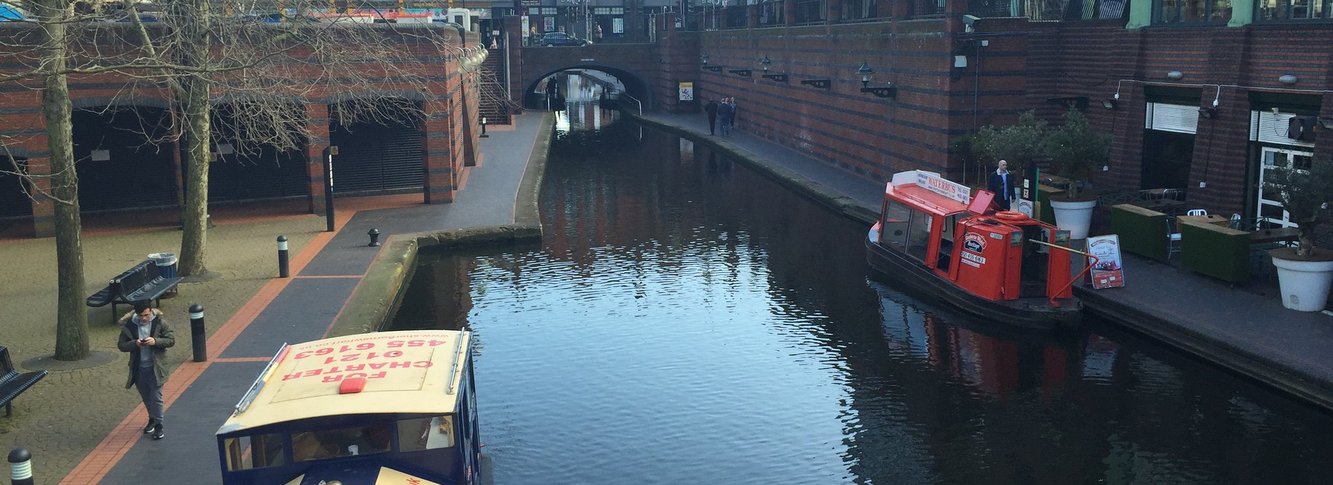| 6 mins read
In Jonathan Coe's recent novel Middle England, one of the characters offers this reflection: ‘A more cheering thought rose up: the realisation that here, on this sunny day in April, the people of Birmingham – young people mainly – were going about their lives in happy and peaceful acceptance of precisely that melding of different cultures that Powell's pinched, ungenerous mind had only been able to imagine leading to violence’.
Enoch Powell's ‘rivers of blood’ speech in 1968 had inflamed racial tensions in Birmingham and beyond. Birmingham's Conservative council leader announced that the city was ‘full up’ and demanded that new immigrants should be directed to other parts of the country.
A positive story of multiculturalism in Birmingham
When Jon Bloomfield arrived in the ‘second city’ in the 1970s (as I did) it was against this kind of background. Forty years later, and having worked for the city council on urban policy, he wants to tell a more positive story.
He does this by interviewing fifty people from families which had immigrated to Birmingham since the Second World War from a range of countries (most from India and Pakistan) and recounting their experiences.
This gives a vivid and valuable picture of what life and work has been like for them, told in their own words, giving concrete illustration of the massive immigrant contribution to the city's economy and public services. In the process it also charts the way in which the sort of work, in factories and foundries, that sustained so many Birmingham livelihoods in the postwar generation, has disappeared (with the city losing more than 200,000 manufacturing jobs between 1979 and 1984).
The city of a thousand trades, as it was once known, had instead become a city of a multitude of races.
How to make multicultural cities work
In today's Birmingham around 44 per cent of the population have a migrant background. This puts the city at the leading edge of a trend that is making itself felt in other great European cities. That is why this book is not just about Birmingham, nor intended to be. It is about how to make multicultural cities work.
The author rejects the approach both of the ‘assimilationists’ who want enforced conformity and the ‘multicultural communitarians’ who think in terms of collective apartness. Instead he recommends an ‘interculturalism’ which brings people together and creates something which is more than just the sum of its parts. The prize is the dynamism of an open and mixed city.
Although he is positive about the progress that has been made, with much less casual racism than forty years ago, Bloomfield is also realistic in recognising the tensions that remain. These were evident in the ‘Trojan Horse’ conspiracy to take over some Birmingham schools by Muslim fundamentalists, now in the attempt by a group of Muslim parents to prevent a primary school in the city teaching their children about aspects of sex education. A play at the Birmingham Rep about sexual abuse within the Sikh community was forced to close after violent protests from Sikh religious fundamentalists. It can be easier to embrace interculturalism than to practice it.
Yet without some kind of common culture, which is not the same as a traditional culture, it is difficult to see how the sort of easy going community that the author envisages can be achieved. It also requires the indigenous population of ‘our city’, many of whom have experienced the unsettling transformation of their city by immigration, to feel part of what has been created.
Civic leadership
Civic leadership is essential. Despite Birmingham's changing population, until 1979 all the city's councillors were white. By 1994 a third of the Labour group were from black and Asian communities. However, this progress carried its own problems. It brought with it the clan system of personalised politics, with key Pakistani individuals or families controlling Labour Party membership and having a patronage relationship with Labour politicians.
As Jon Bloomfield observes: ‘Today, in some areas of the city, the Labour Party membership is almost entirely composed of people of Pakistani or Bangladeshi heritage’. With this comes an attention to personality rather than policy. Birmingham was the pioneer of imaginative civic government, and has endlessly reinvented itself, but today the council has become synonymous with incompetence and mismanagement. It badly needs a new kind of civic leadership, which includes the emergence of significant figures from the city's ethnic communities who are not tied to the traditional clan system.
These are all challenges to be overcome if the open and mixed city that Jon Bloomfield wants is to be achieved. But he is right to be positive; and his book helps to point the way. Multicultural cities are here to stay and all that matters now is making them work. This means learning how to live with difference.
By the end of the century mixed race will be the majority group in Birmingham's population, with the same trend evident elsewhere. One leader of a community project quoted in the book describes why he prefers to think in terms of a ‘salad bowl’ rather than the American ‘melting pot’: ‘Rather than there being one homogenous culture we are looking for a culture where each brings their own flavour to the dish. Each contributes to the dish without losing its own distinctive contribution’.
Salad anyone?
Our City: Migrants and the Making of Modern Birmingham, by Jon Bloomfield is published by Unbound. 285pp. £18.99.
Need help using Wiley? Click here for help using Wiley

